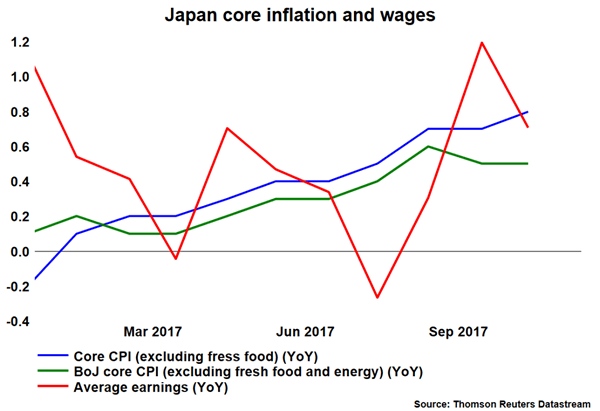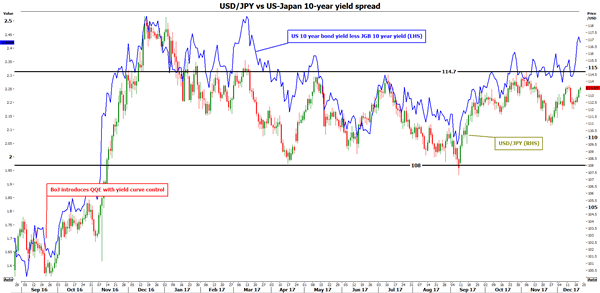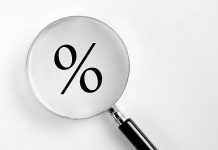The yen underperformed most of its major peers in 2017 despite the improving economic backdrop in Japan, as the Bank of Japan’s ultra-loose policy framework continued to undermine the currency. Will the yen enjoy better times ahead? That is likely to depend on whether the Bank will scale back some of its stimulus, which in turn, will depend on the evolution of inflationary pressures in Japan. If the BoJ keeps its framework untouched while the Fed continues to raise rates, the policy divergence would argue in favor of a higher dollar/yen over time. Any hints to the contrary, however, could come as a major surprise to the market and thereby, lead to a material drop in the cross.
The Japanese economy enjoyed a remarkable year in 2017, though the same cannot be said for the JPY, with the currency set to finish the year lower or practically unchanged against all its major counterparts, besides the US dollar.
Japanese economic data have not looked this good in a long time. The nation’s jobless rate fell to 2.8%, a low last seen in 1994, economic growth is faster compared to recent years, and business sentiment as measured by the Tankan survey is elevated. Meanwhile, even though the core inflation rate remains notably below the Bank of Japan’s (BoJ) 2% target, it has still risen markedly throughout the year.

If things are improving, then why has the yen remained largely unfazed? A large part of that has to do with the BoJ. Under its current framework of QQE with yield curve control, the Bank has committed to keeping yields on longer-dated Japanese Government Bonds (JGBs) fixed near 0%. By stepping into the market and pushing down Japanese yields in an environment where global yields are moving higher, this framework keeps the JPY artificially weak, as the currency cannot draw support from relative interest rates.
So, what is on the cards for 2018, and will the yen enjoy better times ahead? The short answer is: only if inflation accelerates. Inflation, or the lack thereof, is key to understanding Japan and its policymakers. Following decades of very low or negative inflation, the deflationary mindset has almost become engraved in Japanese society, evident by extremely low inflation expectations feeding into subdued wage growth, thereby creating a negative feedback loop that keeps inflation muted. For the yen to recover its lost glamour, the BoJ may need to allow Japanese yields to move higher, but that will only happen once, and if, inflation approaches 2%.
Therefore, the real question is whether inflation will move higher anytime soon. According to the BoJ’s latest forecasts, the 2% target will only be achieved by 2019. However, these forecasts could be revised higher in the foreseeable future, with a little help from Prime Minister Abe and the government. Japan’s ruling coalition recently approved a plan to cut the corporate tax rate to 20% from 30% for three years, but crucially only for companies that raise wages on their employees by at least 3%, and boost capital spending. That said, given that the plan is set to be approved by Parliament in April 2018, any positive effects on inflation from such measures may only show up towards the end of 2018. Thus, although this could be a game-changer for 2019, it is doubtful whether it will impact BoJ policy in 2018.
Besides monetary policy, the other decisive factor for the JPY’s path may be changes to global risk sentiment given the currency’s status as a safe-haven asset. It is important to note, however, that haven flows into the JPY usually tend to be noise in the bigger picture, not trend-generators. Of course, a major risk-off event (such as escalation of tensions in the Korean Peninsula) would be the exception to this norm, and could well bring the yen under buying interest for a prolonged period of time.
All in all, with inflation likely to remain low for a while, there seems to be little need for the BoJ to alter its policy framework, and Japanese 10-year yields look set to remain near 0% in 2018. Meanwhile, the Fed could even deliver more rate hikes in 2018 than the market currently anticipates (may deliver three quarter-point hikes, markets have priced in two). The BoJ-Fed divergence and the resulting widening spread between Japanese and US yields would argue in favor of a higher dollar/yen over time. Dollar/yen could edge up and finish the year close to the 118.60 area, assuming the bulls are strong enough to overcome the 114.70 resistance zone, which is the upper bound of a sideways range that has contained the price action since January 2017. On the contrary, in case the BoJ does scale back some of its stimulus and/or risk sentiment shifts in favor of the yen, the cross could drift lower and aim for the lower bound of that range, at 108.00.














